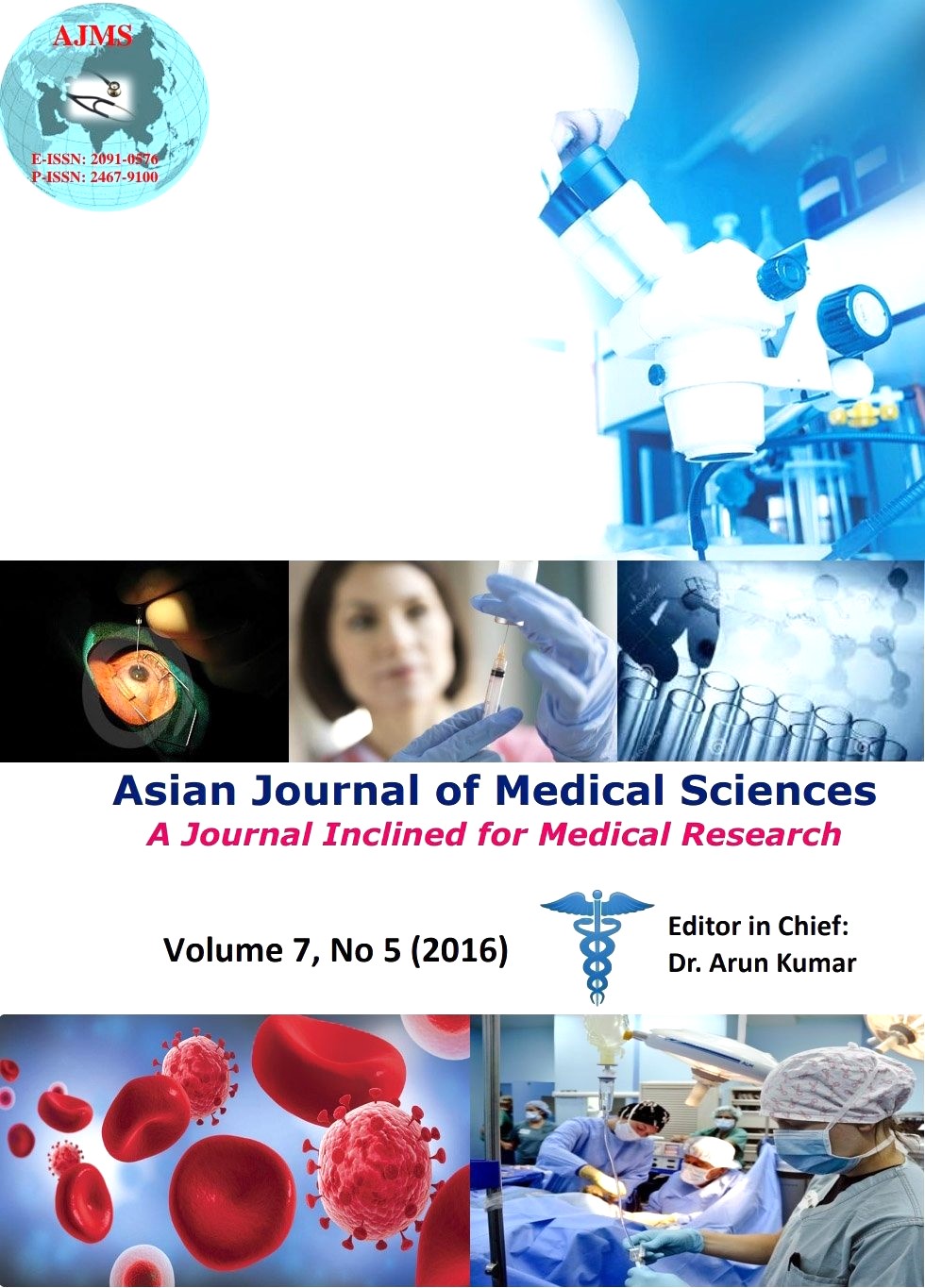The prevalence of secretor status and co-expression of lewis antigen in voluntary blood donors
Keywords:
Secretors, Non-secretors, Lewis antigen, Hemagglutination inhibitionAbstract
Background:
Blood group substances are present in soluble form in a majority of individuals in secretion such as saliva and body fl uids. Secretor status refers to the presence (SeSe and Sese) or absence (sese) of secretor gene which secrete ABH soluble substances. Secretor status can be used to resolve ABO discrepancies of people whose blood group cannot be identified by routine blood grouping and it can also help in identifying patients who may be a high risk group for getting certain diseases.
Aims and Objectives:
Our aim and objectives of the study is to fi nd out the Prevalence of Secretor Status and Co-expression of Lewis Antigens among the Voluntary Blood Donors.
Materials and Methods:
This study was conducted in sixty volunteers and the method used to determine the secretor status was hemagglutination inhibition method. Their blood was used to detect the type of Lewis (Le) antigen since the type of Lewis antigen correlated with the secretor status of the individual.
Results:
Among the sixty subjects tested, forty fi ve of them were found to be secretors and fifteen of them were Non-secretors. The number of Lewis (a+b-) individuals were twelve, Lewis (a-b+) were thirty nine and Lewis (a-b-) were nine.
Conclusion:
The prevalence of secretors was 75% and non-secretors were 25% respectively. We found 65 % of the volunteers were found to be Le (a-b+) positive, 20% were Le (a+b-) and the remaining 15% were Le (a-b-) which correlated with the ABH antigen secretor status.
Asian Journal of Medical Sciences Vol.7(5) 2016 93-96
Downloads
Downloads
Published
How to Cite
Issue
Section
License
Authors who publish with this journal agree to the following terms:
- The journal holds copyright and publishes the work under a Creative Commons CC-BY-NC license that permits use, distribution and reprduction in any medium, provided the original work is properly cited and is not used for commercial purposes. The journal should be recognised as the original publisher of this work.
- Authors are able to enter into separate, additional contractual arrangements for the non-exclusive distribution of the journal's published version of the work (e.g., post it to an institutional repository or publish it in a book), with an acknowledgement of its initial publication in this journal.
- Authors are permitted and encouraged to post their work online (e.g., in institutional repositories or on their website) prior to and during the submission process, as it can lead to productive exchanges, as well as earlier and greater citation of published work (See The Effect of Open Access).




